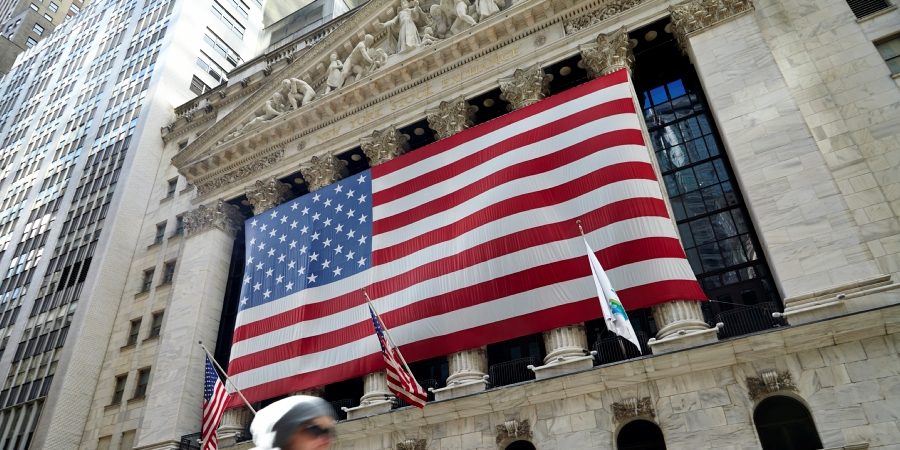How vulnerable is the stock market?
by Kristina Hooper, Global Market Strategist, Invesco Ltd., Invesco Canada
Last week saw the U.S. Senate introduce its version of the tax reform bill, which caused some concern among investors. The Senate version of the bill delayed the much-anticipated corporate tax cut until 2019. In addition, because it has some significant differences from the House bill, it raised uncertainty about Congress’ ability to pass tax reform this year – or at all.
This helped push U.S. stocks lower, which in turn helped to push stocks outside the U.S. lower. Additionally, the VIX (while still relatively low) rose. While last week saw just a small drop for stocks, this activity called to mind a prediction made by Treasury Secretary Steven Mnuchin several weeks ago, warning Congress that if the tax bill is not passed, stocks would experience a “significant” drop.
This begs the question: how vulnerable is the stock market? And, if it is vulnerable, what could cause a correction?
Warning signs are evident
I would argue that, while all stocks are vulnerable to a correction, U.S. stocks are likely the most at risk: U.S. valuations are particularly high, and U.S. stocks have risen in the past year largely because of expectations about the Trump legislative agenda – not just tax reform, although that is the centerpiece of the agenda, but arguably deregulation and infrastructure spending as well.
We are seeing some warning signs:
• While it hasn’t always been predictive, the high yield market has at times been a leading indicator of stock market weakness
• Another warning sign is the flattening of the yield curve, which suggests concerns about the potential for a slowing of the economy
• In addition, the length of the economic recovery in the U.S. can be a warning sign. At 101 months, it is long in the tooth by historical standards (the longest economic expansion in U.S. history was 120 months). And the U.S. stock market would be expected to fall victim to a downturn in the economy; in fact, it has historically been a leading indicator
• There is also the Investors Intelligence Advisor Sentiment Survey, a contrarian indicator, which shows that the sentiment among advisors is at its most bullish level since September 1987.
Geopolitical and monetary policy risks abound
Geopolitical risk typically does not cause corrections – unless it is severe. However, I am worried about the potential for military conflict between Saudi Arabia and Iran. Saudi Arabia has accused Iran of aggression, including firing missiles at it from Yemen. Much of the drama appears to be unfolding in Yemen and Lebanon, but make no mistake – this is about which regional superpower will have the greatest influence over the region. Saudi Arabia has requested that all Saudi nationals in Lebanon return to Saudi Arabia – which could be a prelude to war.
While other Middle East conflicts, such as the one in Syria, have had no material impact on the stock market, this time could be different. A conflict between Saudi Arabia and Iran could drive up oil prices – a rise that has already begun. If this is sustained – and it could be, given that global demand is also helping push up oil prices – then this could create a headwind for economic growth, which could place pressure on stocks.
Another geopolitical risk that could rock capital markets is the possibility of war with North Korea. Mark Fitzpatrick, executive director of the International Institute for Strategic Studies (IISS) – Americas, a global think tank, suggested that the risk of war with North Korea is very high: “Given the personalities involved on both sides, I do not rate continuation of the status quo as higher than 50%.”
And former CIA director John Brennan recently put the chance of war breaking out at 20% to 25%, explaining that the most likely trigger would be if North Korea misinterpreted a statement from or move by the U.S. government. And that seems to be coming closer to reality. On Novenber 11, in response to joint U.S.–South Korea military drills off the Korean Peninsula, North Korea warned the U.S. that “nuclear war may break out at any moment” due to “reckless moves of aggression.”
But the bigger concern for me – as I’ve mentioned in the past – is the potential for protectionist policies, which can cause significant headwinds to economic growth. That risk rose with President Donald Trump’s visit to Asia – but was not realized. However, the risk remains going forward.
There is of course the risk of a monetary policy error as well. I have also written much about this in past commentaries. While the risk has been reduced with the nomination of Jerome Powell to be the next Federal Open Market Committee chair, it has not disappeared. We are in uncharted territory when it comes to normalizing experimental monetary policy, so there’s the risk of disruption.
In addition, there is always a risk of tightening if there is significant economic inequality in a region. This is true in the U.S. as well as in other parts of the world. For example, in the eurozone, where European Central Bank tapering will begin in January, youth unemployment remains high for a number of the periphery countries. Such statistics mean that significant portions of the population are vulnerable as their respective central banks begin to tighten monetary policy.
Monetary policy error could also occur in the other direction; in other words, central banks might not tighten quickly enough to control a substantial rise in inflation. Some are warning that, if global economic growth accelerates enough to create an increased demand for commodities, and if such an environment causes wages and prices to rise, a significant rise in inflation could result, sending global bond and equity markets lower.
Finally, we also have to be alert to the risks that the financial markets of any major economy might present to the global stock market. The outgoing governor of the People’s Bank of China continues to warn about the risks in China’s financial system, from “black swans” (risks that are unexpected and highly unusual) to “grey rhinos” (risks that many see but do not address properly) and “Minsky moments” (the moment when asset prices collapse).
Key takeaway
The reality is that the global economy is showing solid growth with no signs that inflation will rise significantly – arguably a Goldilocks scenario, at least for now. And stocks are certainly being supported at least partially by an improving global earnings backdrop. For example, for the third quarter of 2017, 91% of the stocks in the S&P 500 Index have reported earnings, and 74% of these companies have reported beating earnings expectations, while 66% have reported beating sales expectations.1 This suggests that an upward bias to the stock market remains. However, we need to be vigilant about all the risks out there that threaten to spoil the current stock market rally – from black swans to grey rhinos and everything in between.
Subscribe to the Invesco Canada blog and get Kristina Hooper’s market reviews in your inbox.
This post was originally published at Invesco Canada Blog
Copyright © Invesco Canada Blog














